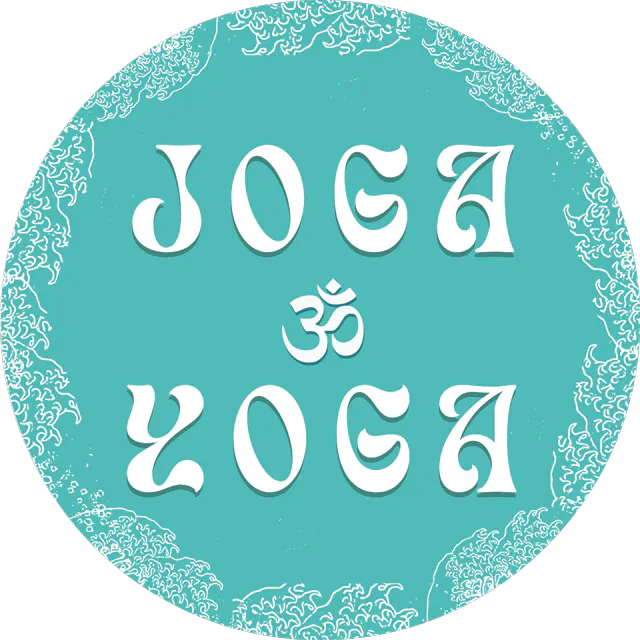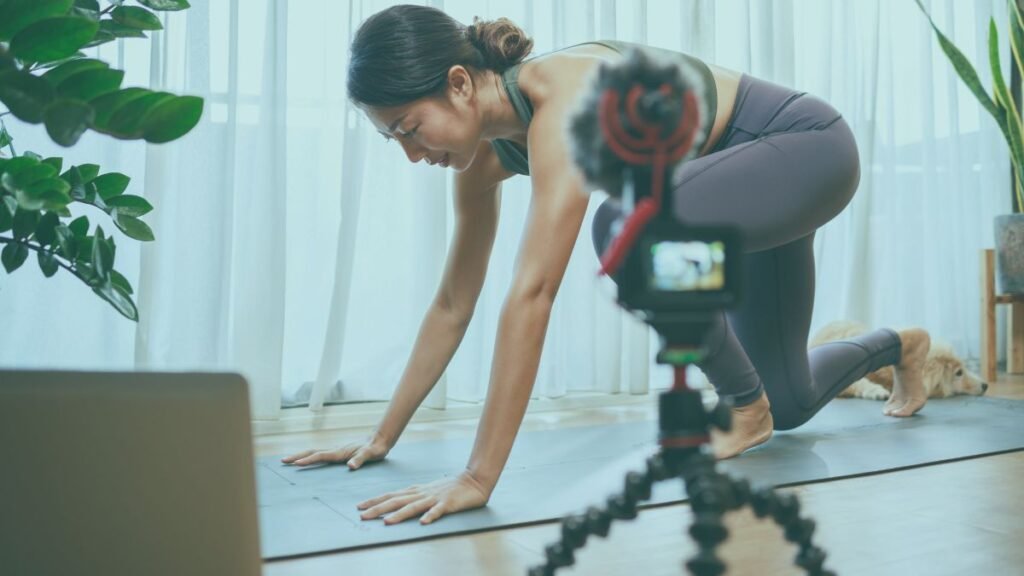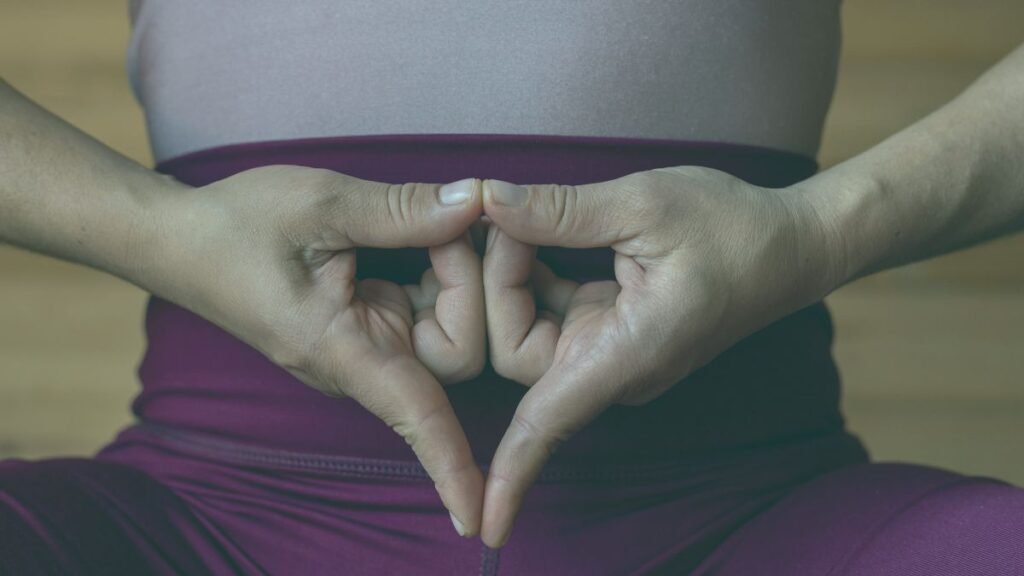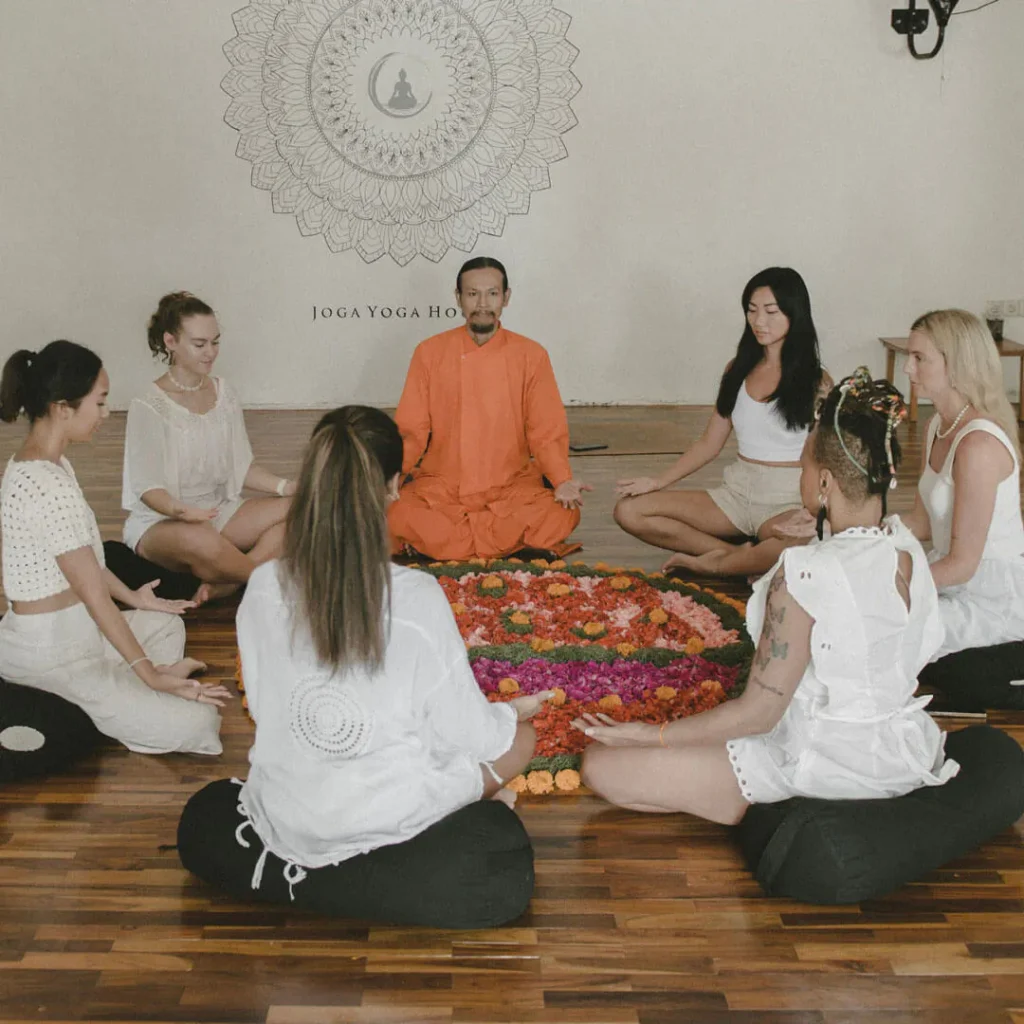Introduction
Yoni Mudra is a symbolic hand gesture (mudra) used in yoga and meditation, closely tied to the concept of feminine energy and creative power. The term “yoni” originates from Sanskrit and translates to “womb” or “source of life.” The mudra is believed to direct and balance energy within the body, particularly targeting the root (Muladhara) and sacral (Svadhisthana) chakras, which are associated with stability, creativity, and emotional balance.
In yogic philosophy, Yoni Mudra is associated with the divine feminine energy known as Shakti — the creative force that drives existence. This mudra is considered a way to connect with the inner self, promote emotional and spiritual stability, and enhance focus during meditation.
In recent years, Yoni Mudra has gained increased attention in modern yoga and wellness communities, particularly among those exploring energy work and feminine empowerment. Despite its growing popularity, scientific research on the physiological or psychological effects of Yoni Mudra remains limited. Most of the reported benefits are based on anecdotal evidence and subjective experience rather than clinical studies.
The goal of this article is to provide an unbiased, fact-based overview of Yoni Mudra, including:
- Its historical and spiritual significance.
- How to practice Yoni Mudra correctly.
- The claimed benefits and potential limitations.
- Scientific evidence and skepticism surrounding its effectiveness.

The History and Spiritual Significance of Yoni Mudra
Yoni Mudra has its roots in ancient Hindu and tantric traditions, where it is linked to the concept of the divine feminine and creative power. The practice of mudras, or symbolic hand gestures, has been part of yogic and spiritual rituals for centuries, used to manipulate the flow of prana (life force) within the body. Yoni Mudra is specifically tied to the energy of Shakti — the goddess representing creative energy, fertility, and the nurturing aspect of the universe.
Connection to the Goddess Shakti
In Hindu tradition, Shakti is seen as the cosmic feminine energy that gives birth to creation. Yoni Mudra is considered a way to awaken and balance this energy within the practitioner. The diamond shape formed by the hands in Yoni Mudra is said to symbolize the womb — the source of creation — reinforcing the connection to the feminine divine.
Yoni Mudra is not exclusive to women; it is practiced by people of all genders as a means of tapping into creative and emotional balance. The practice symbolizes returning to the “womb state” — a state of deep inner awareness and stillness where the mind is free from external distractions.
Historical Context Within Yoga
Yoni Mudra is traditionally practiced in Hatha Yoga and Kundalini Yoga. In Hatha Yoga, mudras are considered powerful tools for balancing energy within the body, aiding in meditation, and deepening spiritual practice. In Kundalini Yoga, Yoni Mudra is used to awaken the kundalini energy at the base of the spine, which represents dormant spiritual potential.
According to some tantric texts, Yoni Mudra was used as a way to channel sexual energy into spiritual awakening — reinforcing the connection between creative power and spiritual growth. However, modern interpretations often emphasize Yoni Mudra’s role in calming the mind and promoting emotional balance rather than sexual or tantric awakening.
Symbolism and Deeper Meaning
The formation of Yoni Mudra with the hands is deeply symbolic:
- Thumbs and Index Fingers Forming a Diamond Shape: Represents the yoni (womb), creation, and feminine energy.
- Closing the Eyes and Focusing Inward: Represents the return to a state of inner peace and detachment from external distractions.
- Balance Between the Right and Left Sides: Represents the harmonization of the ida (feminine) and pingala (masculine) energy channels within the body.
By holding this hand gesture during meditation, practitioners seek to restore inner balance and connect with their creative and emotional centers. The practice is believed to aid in emotional release, spiritual clarity, and a deeper connection to the body’s natural rhythms.
What is Yoni Mudra and How It Works
The Meaning of “Yoni”
The term “Yoni” comes from the Sanskrit word for “womb” or “source of life.” In yogic and tantric philosophy, the yoni symbolizes the divine feminine creative energy (Shakti) and the concept of creation and regeneration. Yoni Mudra is, therefore, seen as a way to reconnect with this creative force and restore balance within the body and mind.
The yoni is not only associated with physical birth but also with emotional and spiritual creation. The practice of Yoni Mudra is designed to direct energy inward, encouraging introspection, emotional balance, and spiritual awakening.
Hand Position and Symbolic Meaning
The physical formation of Yoni Mudra is central to its symbolic and energetic effects:
- Forming a Diamond Shape
- The thumbs and index fingers are brought together to form a diamond shape or inverted triangle.
- This shape represents the womb, the source of life, and the creative potential within.
- The diamond shape is also seen as a symbol of stability and grounding, reinforcing the connection to the root chakra (Muladhara).
- The thumbs and index fingers are brought together to form a diamond shape or inverted triangle.
- The Role of Energy Flow
Yoni Mudra is believed to influence the flow of prana (life force energy) within the body, particularly through the root (Muladhara) chakra and sacral (Svadhisthana) chakra:
- Root Chakra (Muladhara): Governs stability, grounding, and a sense of safety.
- Sacral Chakra (Svadhisthana): Governs creativity, emotional balance, and sensual energy.
- Root Chakra (Muladhara): Governs stability, grounding, and a sense of safety.
- By forming Yoni Mudra and focusing on the breath, practitioners aim to activate and balance these two chakras, promoting a sense of emotional harmony and creative flow.
- Connecting to Feminine Energy
Yoni Mudra is not exclusively for women — it represents the feminine energy within all individuals, including the capacity for creation, nurturing, and emotional depth. Through focused breathing and energetic alignment, practitioners aim to harmonize the masculine (Pingala) and feminine (Ida) energy channels in the body.
How Yoni Mudra Works
Yoni Mudra functions as both a psychological and energetic tool:
- Calms the Mind and Nervous System
By focusing on the breath and forming the mudra, the parasympathetic nervous system is activated, inducing a relaxation response. This helps to lower stress and calm mental activity. - Enhances Focus During Meditation
The diamond shape formed by the hands provides a focal point, helping to draw awareness inward and improve concentration. - Stimulates Feminine Energy and Emotional Release
Yoni Mudra is associated with emotional release, especially around themes of creativity, intimacy, and vulnerability. This practice encourages self-acceptance and emotional balance.

How to Practice Yoni Mudra (Step-by-Step Guide)
Yoni Mudra is a relatively simple but powerful technique. It can be practiced on its own or integrated into a broader yoga or meditation session.
Step 1: Find a Comfortable Seated Position
- Sit in a position that allows for a straight spine and relaxed posture:
- Cross-legged on the floor (Sukhasana).
- Lotus pose (Padmasana) if flexibility allows.
- Sitting on a chair with feet flat on the ground for additional support.
- Cross-legged on the floor (Sukhasana).
Step 2: Form the Yoni Mudra
- Bring your palms together at the center of your body, below the navel.
- Touch the tips of your thumbs and index fingers together, forming a diamond or inverted triangle shape.
- Keep the other fingers intertwined and relaxed.
- Rest your hands gently on your lower abdomen (over the sacral chakra).
Step 3: Focus on Slow, Deep Breathing
- Close your eyes and breathe deeply into your belly.
- Inhale for a count of four, feeling your abdomen expand.
- Exhale for a count of six, feeling your body soften.
- With each breath, visualize energy flowing from the base of your spine (root chakra) upward to the sacral chakra and beyond.
Step 4: Maintain the Mudra for 5–10 Minutes
- Hold the mudra and continue deep breathing.
- If your mind wanders, gently bring your focus back to your breath and the feeling of energy moving through your body.
- You may feel warmth, tingling, or a sense of groundedness — these are signs that energy flow is being activated.
Step 5: Close the Practice with Gratitude and Intention
- After 5–10 minutes, release the mudra and place your hands on your knees or in your lap.
- Take a few grounding breaths.
- Reflect on any emotions or sensations that arose during the practice.
- Set a positive intention for the rest of your day.
Pro Tips for Practicing Yoni Mudra
✅ Best Time to Practice:
- During meditation or relaxation.
- After a yoga session, when the body is already in a state of relaxation.
- Before sleep to promote emotional release and calmness.
✅ Adjustments for Comfort:
- If sitting cross-legged is uncomfortable, use a yoga block or cushion to support your hips.
- Practitioners with limited mobility can perform Yoni Mudra while seated in a chair.
- If hand flexibility is limited, allow the fingers to rest gently without forcing the diamond shape.
✅ Breathing Technique:
- For emotional release, try exhaling through the mouth.
- For mental clarity, use balanced breathing (inhale and exhale for the same length of time).
Claimed Benefits of Yoni Mudra
Yoni Mudra is associated with a range of emotional, physical, and spiritual benefits. While many of these benefits are supported by anecdotal evidence and personal testimonials, the scientific community remains cautious due to the lack of large-scale empirical studies. However, the psychological and emotional benefits of mindfulness and focused breathing are well-documented, which may explain some of the reported effects of Yoni Mudra.
Emotional and Mental Benefits
The calming and introspective nature of Yoni Mudra is said to have a profound effect on emotional and mental well-being:
- Reduces Stress and Anxiety:
Focusing on the breath while holding Yoni Mudra helps engage the parasympathetic nervous system (the “rest and digest” system), which reduces cortisol levels and promotes relaxation.
- The hand position serves as a physical anchor, helping to calm the mind and reduce anxious thoughts.
- Similar effects are observed with other mindfulness-based practices like deep breathing and meditation.
- The hand position serves as a physical anchor, helping to calm the mind and reduce anxious thoughts.
- Improves Emotional Balance and Mental Clarity:
Practitioners report greater emotional stability and clarity after consistent practice of Yoni Mudra.
- The focus on the sacral and root chakras is believed to help release stored emotional energy and promote balance.
- The diamond shape created with the hands serves as a grounding point for emotional energy.
- The focus on the sacral and root chakras is believed to help release stored emotional energy and promote balance.
Physical Benefits
While the physical benefits of Yoni Mudra are more difficult to measure scientifically, practitioners frequently report improvements in reproductive and digestive health:
- Enhances Fertility and Reproductive Health:
Yoni Mudra is believed to balance energy flow through the root and sacral chakras, which are associated with reproductive health.
- Women struggling with infertility have reported improved menstrual cycles and reduced PMS symptoms after regular practice.
- Women struggling with infertility have reported improved menstrual cycles and reduced PMS symptoms after regular practice.
- Balances Hormones (Especially During Menopause):
Since the root and sacral chakras are linked to hormonal balance, Yoni Mudra is thought to help ease symptoms of menopause, including mood swings and hot flashes. - Improves Digestive Health:
The sacral chakra is also associated with digestive function.
- Deep breathing and energy balancing through Yoni Mudra may reduce symptoms like bloating, constipation, and indigestion.
- Deep breathing and energy balancing through Yoni Mudra may reduce symptoms like bloating, constipation, and indigestion.
Spiritual Benefits
In yogic and tantric traditions, Yoni Mudra is regarded as a powerful tool for deepening spiritual awareness and connecting with the divine feminine energy (Shakti):
- Promotes Inner Connection and Self-Awareness:
The inward focus created by Yoni Mudra encourages practitioners to explore their inner landscape, enhancing self-awareness and emotional insight. - Activates the Divine Feminine Energy (Shakti):
The practice is believed to channel the creative energy of the universe, represented by Shakti, into the practitioner’s body and mind.
- This energy is associated with creation, sensuality, and emotional expression.
- This energy is associated with creation, sensuality, and emotional expression.

Potential Risks and Ethical Considerations
While Yoni Mudra is generally considered safe and low-risk, there are some important factors to consider before incorporating it into your practice. Understanding these risks helps ensure a balanced and respectful approach to the practice.
Not a Replacement for Medical Treatment
- Yoni Mudra should be viewed as a complementary practice rather than a primary treatment for physical or emotional health issues.
- While it may support emotional balance and reproductive health, no clinical evidence supports Yoni Mudra as a standalone medical intervention.
- Individuals with medical concerns related to fertility, hormonal health, or emotional regulation should consult a qualified healthcare provider before relying on Yoni Mudra.
➡️ Example: If you are experiencing severe anxiety or depression, Yoni Mudra may provide emotional support, but it should not replace therapy or medication prescribed by a mental health professional.
Emotional Overload
Yoni Mudra’s association with deep emotional release can sometimes lead to overwhelming responses, particularly for individuals with a history of trauma:
- Practicing Yoni Mudra can activate stored emotional energy, bringing unresolved trauma or emotional pain to the surface.
- Without proper support or guidance, this emotional release can cause distress or anxiety.
- Practitioners with a history of PTSD, emotional instability, or trauma should approach Yoni Mudra gently and consider working with a qualified yoga therapist.
➡️ Example: A woman practicing Yoni Mudra for emotional balance may unexpectedly experience feelings of sadness or anger linked to past trauma. A trauma-informed instructor can provide support in navigating these emotions.
Cultural Sensitivity
Yoni Mudra originates from Hindu and tantric traditions, which hold deep cultural and spiritual significance:
- Yoni means “womb” in Sanskrit and represents the divine feminine creative power in Hindu philosophy.
- Appropriating or commercializing Yoni Mudra without understanding its historical and spiritual context can be seen as disrespectful to the tradition it comes from.
- Western interpretations that detach Yoni Mudra from its cultural roots risk reducing it to a superficial “wellness trend.”
➡️ Example: Using Yoni Mudra solely for aesthetic or commercial gain (e.g., promoting it as a “manifestation technique”) may be viewed as cultural misappropriation.
Financial Cost and Exploitation Risks
The rise of the wellness industry has led to the commercialization of traditional practices like Yoni Mudra:
- Expensive workshops and teacher training programs are often marketed with exaggerated claims about spiritual awakening, emotional healing, or fertility improvement.
- Some instructors and businesses may present Yoni Mudra as a “quick fix” for emotional or physical issues, which is not aligned with its traditional purpose.
- Individuals seeking to explore Yoni Mudra should approach expensive workshops with caution and seek out experienced teachers with legitimate training in Hatha or tantric yoga.
➡️ Example: A $500 “Yoni Mudra Feminine Awakening Course” promising immediate results is likely a red flag. True benefits from Yoni Mudra develop gradually with consistent practice.
Should You Try Yoni Mudra?

Who Would Benefit from Yoni Mudra
While Yoni Mudra may not be suitable for everyone, it can be particularly beneficial for individuals seeking emotional and energetic balance:
✅ Individuals Seeking Emotional Balance
- If you struggle with stress, anxiety, or emotional instability, Yoni Mudra can serve as a grounding and calming practice.
- It can help improve emotional regulation and increase self-awareness.
✅ Women Experiencing Fertility or Hormonal Issues
- Yoni Mudra’s connection to the sacral and root chakras (linked to reproductive health) makes it popular among women dealing with irregular cycles, PMS, and fertility issues.
- While evidence of direct hormonal benefits is lacking, the emotional and energetic balancing effects of the practice may offer indirect support.
✅ People Looking for Deeper Meditation Focus
- The combination of hand positioning and breath control enhances focus and mindfulness during meditation.
- Yoni Mudra’s symbolic connection to creation and balance can deepen spiritual awareness and inner peace.
Managing Expectations
- Subtle and Gradual Results: Unlike physical exercise or medical treatments, the benefits of Yoni Mudra are often subtle and cumulative over time.
- Emotional Shifts May Be Subconscious: You may notice improvements in emotional resilience and clarity before seeing any direct physical benefits.
- Patience and Consistency: Results from energetic practices like Yoni Mudra are not immediate — consistent practice over several weeks or months is usually necessary.
➡️ Example: Practicing Yoni Mudra twice a week for a month may result in greater emotional balance and mental clarity, but physical benefits (like improved menstrual cycles) could take longer.
How to Find a Qualified Instructor
Choosing the right teacher or instructor is crucial to experiencing Yoni Mudra safely and authentically:
- Look for Traditional Lineage:
- Seek teachers with backgrounds in Hatha yoga, Kundalini yoga, or tantra.
- Instructors trained under reputable schools or lineages are more likely to provide authentic and respectful guidance.
- Seek teachers with backgrounds in Hatha yoga, Kundalini yoga, or tantra.
- Avoid Overly Commercialized or New Age Claims:
- Be cautious of promises related to “immediate awakening” or “miracle fertility cures.”
- Authentic Yoni Mudra teachers will emphasize mindfulness, self-awareness, and consistency over quick results.
- Be cautious of promises related to “immediate awakening” or “miracle fertility cures.”
- Trial Classes and Recommendations:
- Attend a few trial classes or meditation sessions before committing to a long-term program.
- Personal recommendations from experienced practitioners or yoga communities are often the most reliable source.
- Attend a few trial classes or meditation sessions before committing to a long-term program.
Conclusion
Summary of Key Points
- Yoni Mudra is a subtle yet powerful practice rooted in ancient yogic traditions and the concept of divine feminine energy (Shakti).
- While scientific evidence is limited, many practitioners report improved emotional balance, mental clarity, and enhanced spiritual awareness.
- Yoni Mudra may support reproductive health and hormonal balance, but it should not replace conventional medical treatment.
Potential Benefits:
✔️ Emotional balance and stress relief
✔️ Improved focus and meditation depth
✔️ Support for reproductive and hormonal health
✔️ Spiritual connection and inner peace
Potential Risks:
❌ Not a replacement for medical care
❌ Emotional overload or trauma resurfacing
❌ Financial exploitation from commercialized programs
❌ Cultural appropriation and misrepresentation
Approach with an Open but Critical Mind
- Yoni Mudra’s benefits are subtle and best experienced with patience and consistent practice.
- Engage with the practice respectfully, recognizing its cultural and spiritual roots.
- While it may provide emotional and physical benefits, managing expectations and integrating it as part of a holistic wellness routine is key.






